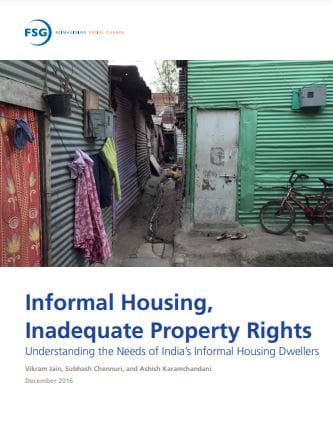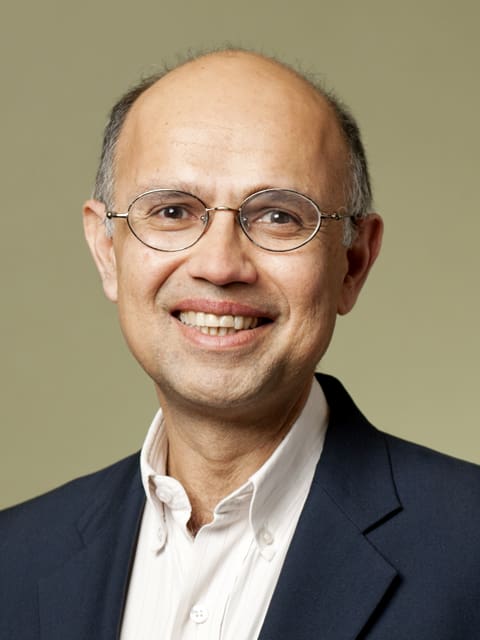In India, as in many other developing countries, urban population growth and the shortage of planned affordable housing have led to 26–37 million households (33–47 percent of the urban population) living in informal housing (residences on encroached land or in unplanned settlements). Informal housing dwellers often live in poor conditions (e.g. lack access to roads, sewage and drainage) and face the threat of eviction or demolition due to limited property rights. Lack of planned affordable housing implies that informal housing is going to exist in the foreseeable future, and steps should be taken to ensure better living conditions for people living in informal housing.
This report applies a property rights lens to segment the different types of informal housing, to understand the size and the needs of these segments, and to identify potential solutions to meet these needs. Research for the report involved reviewing 40 reports, speaking to 56 experts, conducting around 200 qualitative interviews of informal housing dwellers in 90 settlements, conducting quantitative interviews of 517 informal housing dwellers in 40 settlements in four cities (Delhi, Pune, Hyderabad, and Cuttack), and gathering feedback on the findings from 31 experts. The report offers recommendations for addressing needs of families living in various informal housing segments.
This report was funded by Omidyar Network
Top Takeaways
- Informal housing has a range of property rights and thereby different needs. This report segments informal housing in increasing order of access to property rights (insecure housing, transitional housing, and secure housing).
- About half the families in informal housing have some fear of eviction (with those living in insecure and transitional housing having a much higher prevalence), but a majority of families with some fear of eviction are willing to invest and improve their dwelling units (e.g., build a toilet, add a floor).
- Top stated needs of informal housing families—toilets (44 percent), water (36 percent) and drainage (28 percent).
- Informal housing residents desire formal property rights but policy makers are uncomfortable condoning illegal activity (e.g., squatting). Policy makers are, however, comfortable regularizing unauthorized housing, as the owner-occupants have uncontested ownership of the land and the contraventions are considered less severe (compared to squatting).




